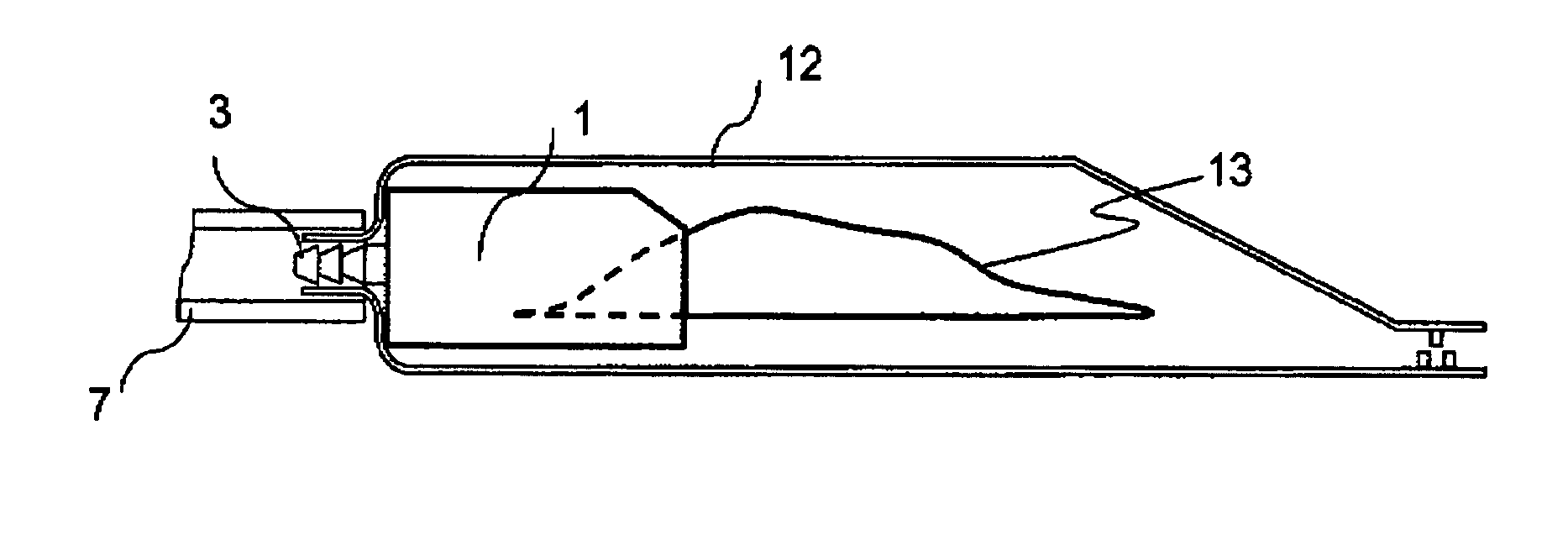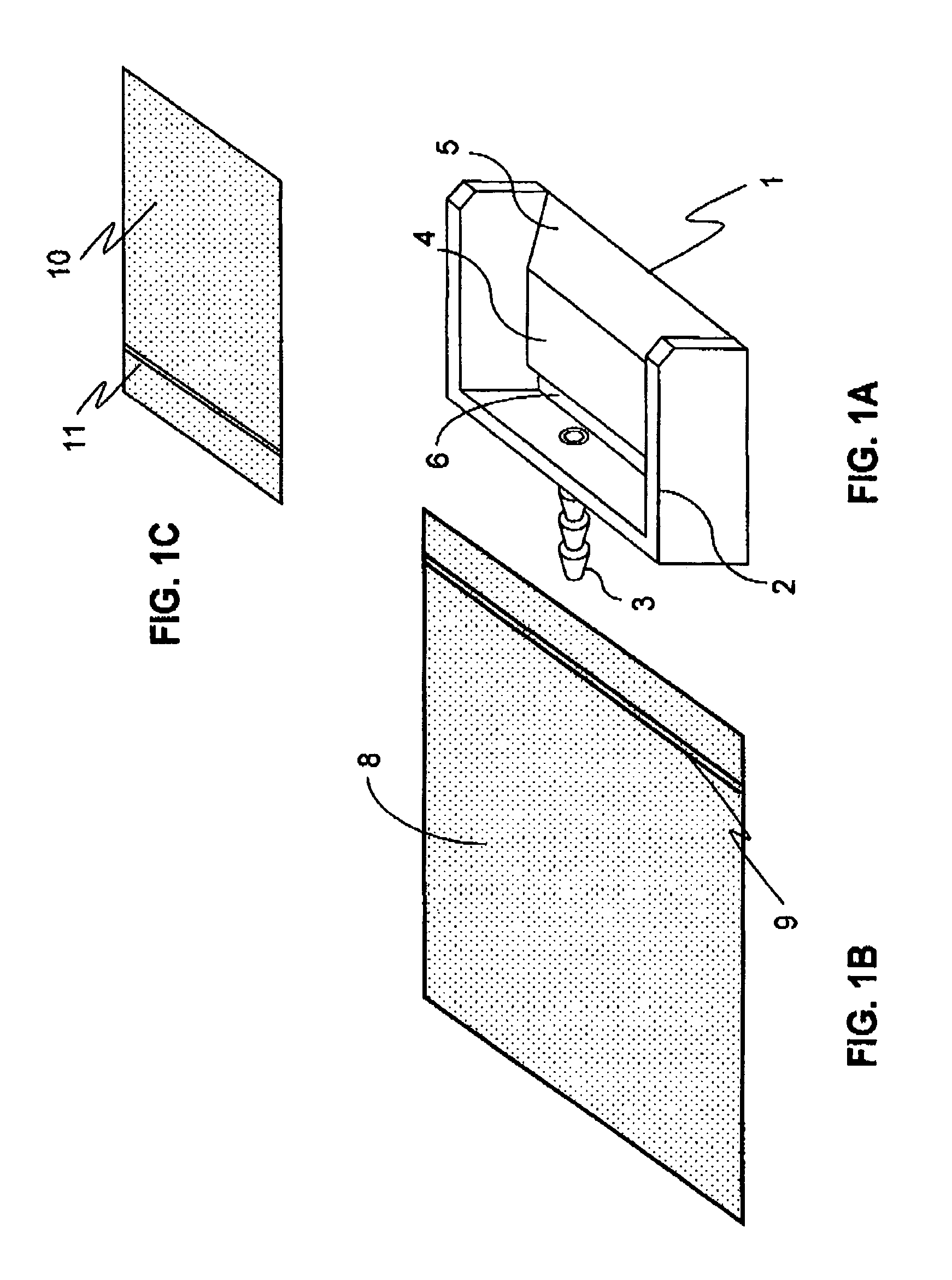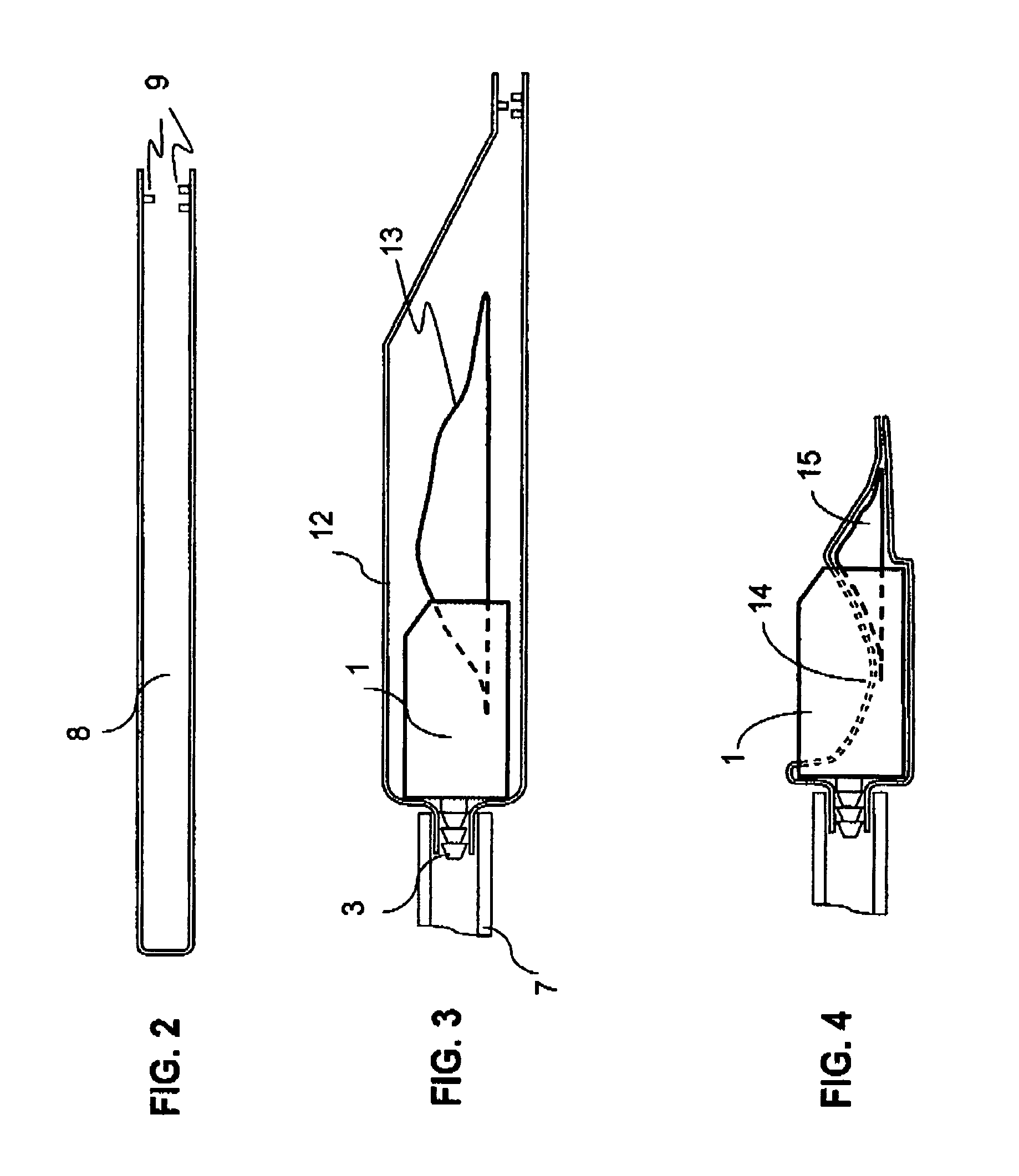Method and apparatus for evacuating re-sealable bags
a technology of resealable bags and methods, applied in the field of methods and apparatus for evacuating resealable bags, can solve the problems of air remaining in the bag, air re-entry and becoming trapped in the bag, and difficult application, so as to achieve quick and inexpensive exhaustion of air and preserve the vacuum
- Summary
- Abstract
- Description
- Claims
- Application Information
AI Technical Summary
Benefits of technology
Problems solved by technology
Method used
Image
Examples
Embodiment Construction
[0032]This invention takes advantage of a key principle of physics: All of the space inside a vacuum chamber experiences the same vacuum level. This means that if an open re-sealable bag and its contents are placed inside a vacuum chamber, the inside of the re-sealable bag will be evacuated to the same level as rest of the space inside the vacuum chamber. Secondly, since there will always remain some amount of air in the vacuum chamber, and the air density will be uniform throughout the vacuum chamber, the amount of residual air trapped inside the re-sealable bag can be minimized by squeezing the re-sealable bag down to its smallest possible volume prior to re-sealing the bag. This translates into making the re-sealable plastic bag conform as closely as possible to its contents. Accordingly, the optimal method of evacuating a re-sealable bag is to place the opened bag inside a collapsible vacuum chamber, draw down a vacuum, allow the collapsible vacuum chamber to force the re-sealab...
PUM
 Login to View More
Login to View More Abstract
Description
Claims
Application Information
 Login to View More
Login to View More - R&D
- Intellectual Property
- Life Sciences
- Materials
- Tech Scout
- Unparalleled Data Quality
- Higher Quality Content
- 60% Fewer Hallucinations
Browse by: Latest US Patents, China's latest patents, Technical Efficacy Thesaurus, Application Domain, Technology Topic, Popular Technical Reports.
© 2025 PatSnap. All rights reserved.Legal|Privacy policy|Modern Slavery Act Transparency Statement|Sitemap|About US| Contact US: help@patsnap.com



